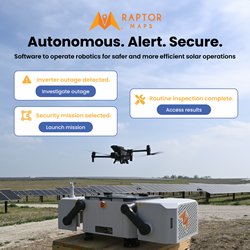Fraunhofer ISE certifies: DEGER solar tracking systems gain the highest energy yield
Long term yield analyses confirms: MLD technology outclass other tracking technologies
Horb a.N., September 10, 2013. DEGERenergies dual axis tracking systems with the patented MLD Sensor technology gain 42.9 percent more solar energy as competitive static systems at the same project site with identical specs like module layout and inverter design. This results from a comparative study by continuous measuring executed by the Fraunhofer-Instituts für Solare Energiesysteme, ISE, Freiburg.
During the last two years, from March 2011 till February 2013, the experts of Fraunhofer ISE compared four different PV Systems at the solar park Horb-Rexingen in Germany which has been developed and installed by DEGER. The compared systems: ground mount static PV systems, single axis trackers with MLD technology from DEGER, dual axis trackers with astronomical control and dual axis trackers with MLD* Technology. All four PV systems had the same specifications like module layout and inverter design. Due to this all four systems had the same DC name plate capacity. Part of the scope of quality monitoring was to determine the yield and the own consumption.
The most important results determined by standard method:
· Dual axis DEGERtrackers are generating a 42.9 percent higher yield than static systems.
· Dual axis DEGERtrackers are generating a 5.3 percent higher yield than astronomical controlled dual axis tracker. If we take the own consumption into account, the DEGERtrackers even have a 6 percent higher yield than the astronomical system.
· DEGERtrackers have the lowest own consumption compared to the measured dual axis astronomical tracking systems in this study.
· The generated additional yield, due to the DEGER MLD tracker, is visible both during low level diffuse light conditions and high level diffuse light conditions.
The systems in comparison
The static grounds mount installation (System1) consists of 6 single axis trackers with deactivated tracking function. Each rack has 6 modules installed. Those modules are connected in four parallel strings with nine in series connected PV modules. These strings are connected to one inverter. The PV arrays are facing south in a 30° angle.
System 2 (DEGER TOPtracker) is identical to System1 in terms of interconnection of the PV modules but with activated tracking function. These single axis tracking systems are controlled by one control system and one MLD sensor. The array is facing south in a 30° angle and the tracking takes place in single axis, east west direction.
System 3 is a dual axis astronomical tracking system with four parallel connected strings, with nine in series connected PV modules. Also this array is connected to one inverter.
System 4 (DEGERtracker 7000NT) is likewise a dual axis tracker. In this case with the MLD sensor responsible for the tracking function. Like the other dual axis tracker this array is connected with four parallel strings with nine in series connected PV modules.
Also, this array is connected to one inverter.
All systems utilize 36 Sanyo HIP-215NKHE1 modules and one SMA SMC 8000TL inverter.
Comparable data 2012
The static ground mount (system 1) was generating 9,191kWh solar energy in the year 2012. The single axis MLD system (system 2) generated 11,774 kWh solar energy in the same time and location. This corresponds to an additional yield of 28.1 percent. The own consumption of the single axis tracker was determined with 40 kWh.
The astronomical controlled dual axis tracker generated 12,647 kWh solar energy. The additional yield compared to the static ground mount system is 37.6 percent. The own consumption of the tracking system was 137 kWh.
The dual axis tracking system with DEGER MLD technology generated 13,132 kWh. This corresponds to an additional yield of 42.9 percent compared to the static ground mount system. The own consumption of the DEGER dual axis tracker was determined with 52 kWh.
Long term yield analyses confirms: MLD
technology outclass other tracking technologies
DEGER CEO Artur Deger: "Of course we are pleased that the Fraunhofer ISE study confirms our long term yield measurements and the measurements of our customers. Due to this study we now have an independent scientific proof that MLD tracking generates the highest yield of all in the field used tracking systems.
By the way: Not only that astronomical tracking system generate less solar energy, the astronomical systems need more effort as our MLD Sensors controlled tracking systems.
This is because of the central processor control. All astronomical systems have to be connected to the computer via cable.
"A central computer and the inter connection between is not needed at all with DEGER MLD technology" explains Mr. Artur Deger." Due to this we increase the reliability and fail safe stability which has a positive effect in regard to investment and maintenance for a solar project. Also a complete malfunction of a solar park due to a central computer breakdown is excluded with our MLD Technology".
Pleased will also be the Environmental Minister of Baden-Württemberg, Mr. Franz Untersteller, due to the provided results. Mr. Untersteller had visited DEGER by the end of June and heard about this study during this occasion. "If Fraunhofer ISE can confirm the numbers which I have heard today, this will be good news which will suggest to use your systems", so the Minister.
*MLD = Maximum Light Detection
Featured Product

Raptor Maps - The integrated operating system for end-to-end solar management
Operate autonomous drones and other robotics technology on your solar farms with Raptor Maps' robotics operations platform. Our end-to-end solution allows you to build and schedule data collection missions, to analyze collected data through our analytics engine, and to address identified issues through our remediation intelligence suite. From construction monitoring to substation inspections to SCADA-alert generation missions, Raptor Robotics gives your team unparalleled insights into the health and status of your project. Improve the safety, efficiency, and scale of your operations with Raptor Robotics.
